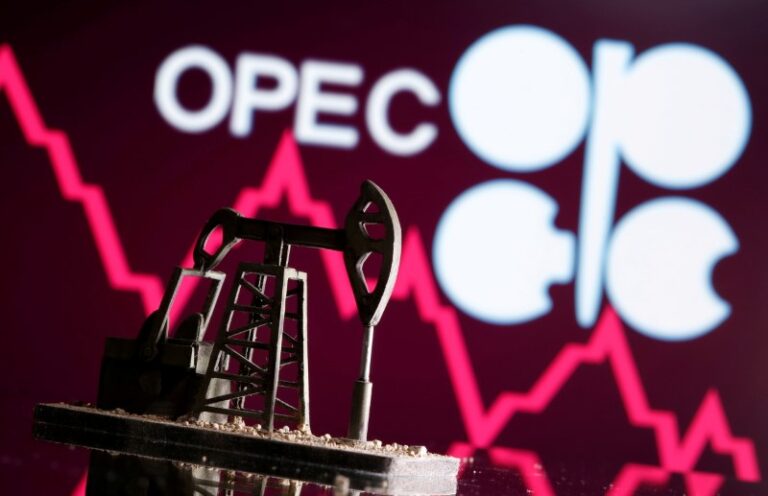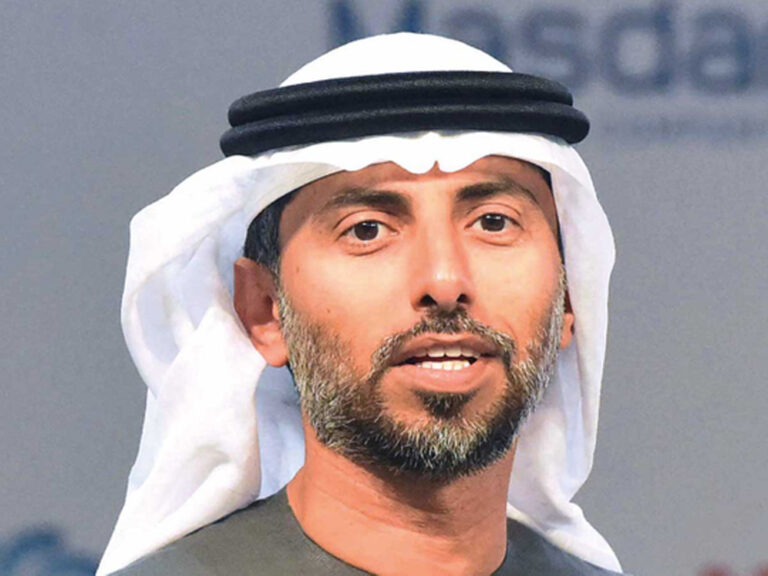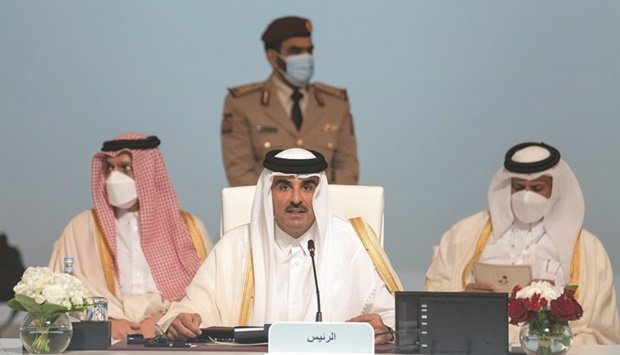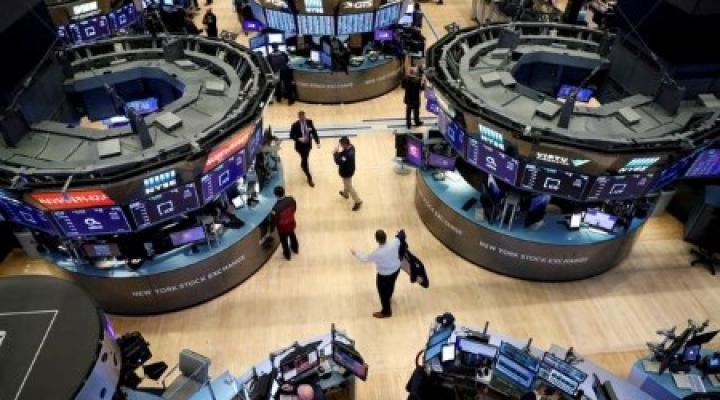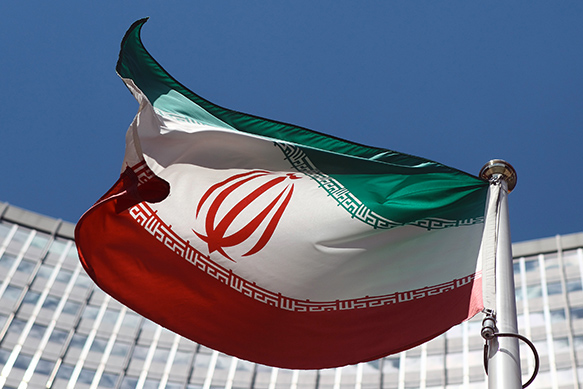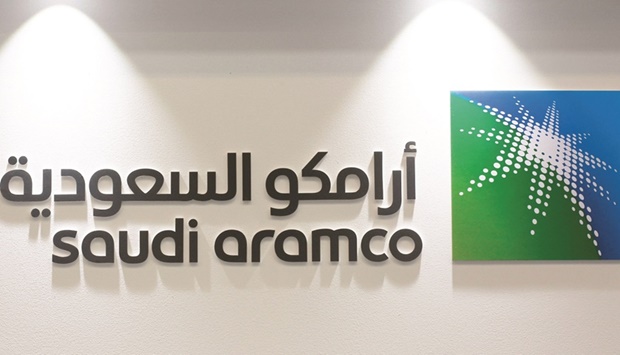India solar park sparks desire for school
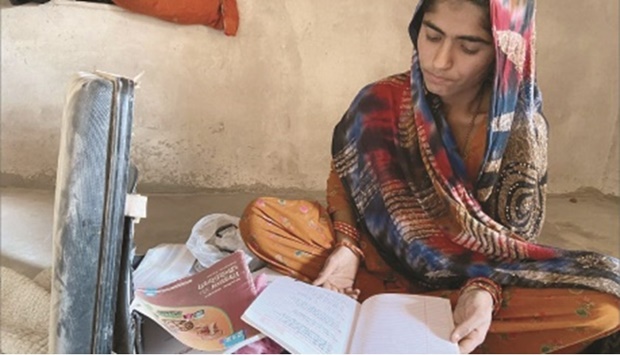
By Roli Srivastava/Bhadla
The teenage girls of Bhadla, near one of the world’s largest solar parks, store their books in tattered briefcases and their dreams in the essays they write between household chores.
Their remote pastoral community lost the land their animals grazed on until about a decade ago to the solar power plant in the northwestern state of Rajasthan — as well as the opportunity to work at the park due to a lack of education and skills.
Once resentful, these days Bhadla’s young women say they want to get jobs at the solar facility, reflecting emerging aspirations as India expands its renewable power capacity amid a global shift to clean energy.
“I could work in the solar park if I was educated — I could manage files in the office or do their accounts,” said Hira Bano, 18, who finished tenth grade two years ago.
“I have to study or I will be stuck in household work all my life,” said Bano, taking her books out of a briefcase gathering dust since the only village school shut more than two years ago.
Bhadla is home to one of the 52 solar parks India had approved across 14 states as of last year, in a drive to wean itself off planet-heating coal and meet a renewable energy goal of 500 gigawatts by 2030.
Sunny Rajasthan is a preferred state for building large new solar installations as it has available barren desert land that is sparsely populated, said state officials.
At 2,300 megawatts, Bhadla has the world’s largest solar farm capacity — and more parks are in the offing in Rajasthan, according to officials at the state-run Rajasthan Renewable Energy Corporation Limited (RRECL).
That is creating opportunities in a region with previously few jobs due to its extreme natural conditions and lack of water, said RRECL chairman and managing director Subodh Agarwal.
Nonetheless, Bhadla locals — pastoralists who for generations kept animals on state land they treated as their own — feel left out of the development frenzy in their backyard.
“We have lost land and livestock, so it is only education that can give us a livelihood,” said village elder Mohamed Sujawal Mehr.
“Now big companies surround us, but only a few of our men got jobs there,” he said, noting that even a security guard position requires tenth-grade schooling. “How can they hire us if we can’t read or write?”
Bhadla’s school was once an unused village accessory, as education was not seen as a priority, until the arrival of the solar park infused new life into it.
The park’s biggest operator, Saurya Urja, a joint venture of the state and infrastructure firm IL&FS, started sending two teachers to the school to hold regular classes.
One of them, Andaram Meghwal, said that when he first came to the village in 2017, the children climbed to the tops of the trees they were so afraid.
“We got students (to come in) from nearby towns to give them exposure to the world outside,” he said. “We shared stories of women achievers, the challenges they overcame.”
Bano — who had previously spent her time grazing cattle, working on the farm and fetching firewood — fell in love with science, school games and the idea of pursuing a career.
Girls were more inspired to study than boys as they had lost their main activity of grazing animals, while men could find work at the solar park, Meghwal said.
This was between 2015 and 2020, when 900,000 blue solar panels were erected on 12,000 acres, 5,500 jobs were created, and eateries and tea shops opened along a new highway.
But as the park neared completion, jobs for unqualified workers began to shrink. The plant has created about 1,100 long-term jobs to operate and maintain it over 25 years — but locals lack the technical skills needed, said Saurya Urja officials.
Sarthak Shukla, a sustainability policy consultant, said clean energy provides fewer direct jobs than thermal coal power, which employs 800 to 900 people for a 1GW plant compared with 25 to 30 at a similar-sized solar park.
In Bhadla, Ayub Khan Chooda, 35, is among those who have benefited, crediting his contract to wash 400 solar panels daily to his three tractors — which pull small water tankers along the rows — despite having studied only up to first grade.
Dadda Khatoon, 32, was also happy when her husband returned from Dubai, after six years of milking and grazing camels, and got a security guard job at the solar park for Rs8,000 ($106.30) a month.
“He is happy, healthy and we are also able to save some money,” said Khatoon, sitting with village women in the winter sun. “But I don’t seem to have a role anymore apart from cooking and feeding my family. I think I had more respect then.”
With no land left to graze their animals, Bhadla residents sold their livestock whose fodder, a bitter yellow fruit called “tumba”, now lies uneaten on the vine between the solar panels.
Women from this conservative community no longer venture out, fearing the busy highway and “the new people from cities”.
Local health workers said hypertension and diabetes have become quite common owing to the new sedentary lifestyles.
Shukla said that with a better understanding of the social and cultural impacts and the right policies, the solar sector could offer opportunities for Indian women, including training and other incentives such as health and education programmes.
Globally, women make up 32% of the renewable energy workforce compared with 22% in the oil and gas industry, according to the International Renewable Energy Agency.
Local elder Mehr loves to recall the celebrations two years ago when three girls, including Bano, passed their tenth grade, the first to do so in this village of 250 households.
“We banged plates, clapped,” he said.
But their school, which had about 100 students, shut down soon after when a disgruntled teacher submitted a report showing zero attendance — a claim disputed by villagers.
The solar firm also stopped supporting classes and shifted to a broader community focus running mobile health and veterinary clinics, according to Saurya Urja CEO Keshav Prasad.
He told the Thomson Reuters Foundation that the company backed the villagers’ demand to reopen the school, pointing to rising demand for education across villages near the solar park.
Manphool Singh, the education official overseeing Bhadla school, said he had received the requests and a government decision was pending.
“We are trying our best to open it so children can study again,” he said.
Meanwhile, the girls cook, clean and stitch together colourful pieces of cloth to make rugs for their dowries.
Drawing water from a well, Asma Khatoon, 15, said her only desire was for the school to reopen so she could sit her tenth-grade exam.
In a short Hindi essay, she wrote: “This village has too many restrictions… I want to study, become a working woman.” — Thomson Reuters Foundation
